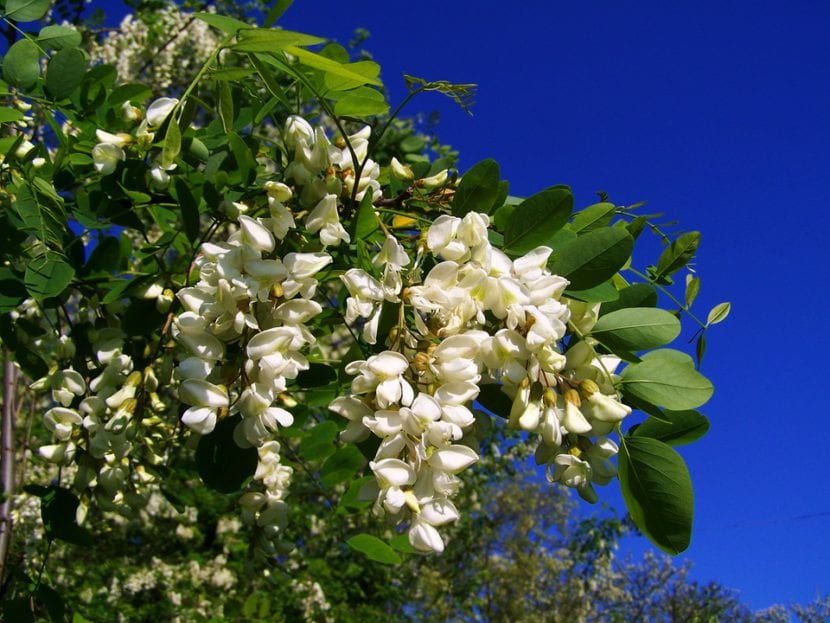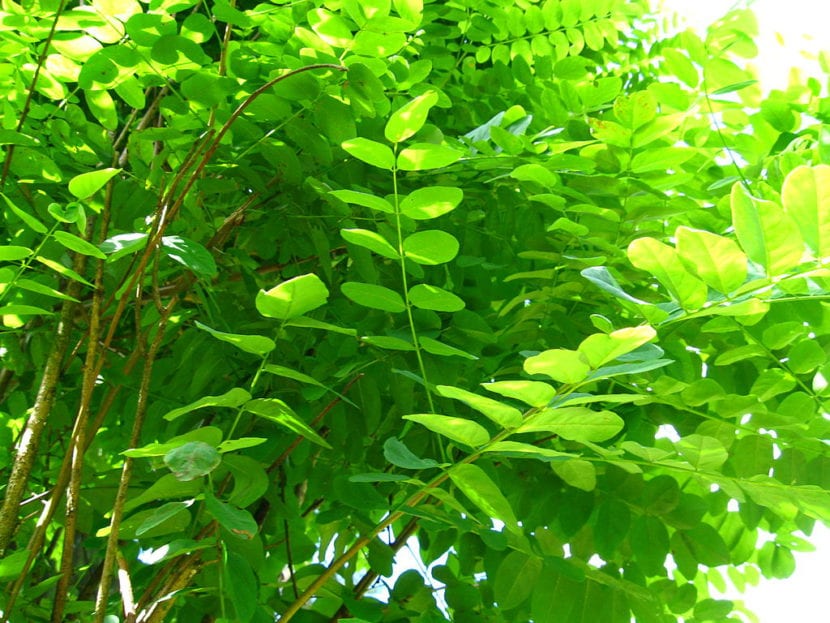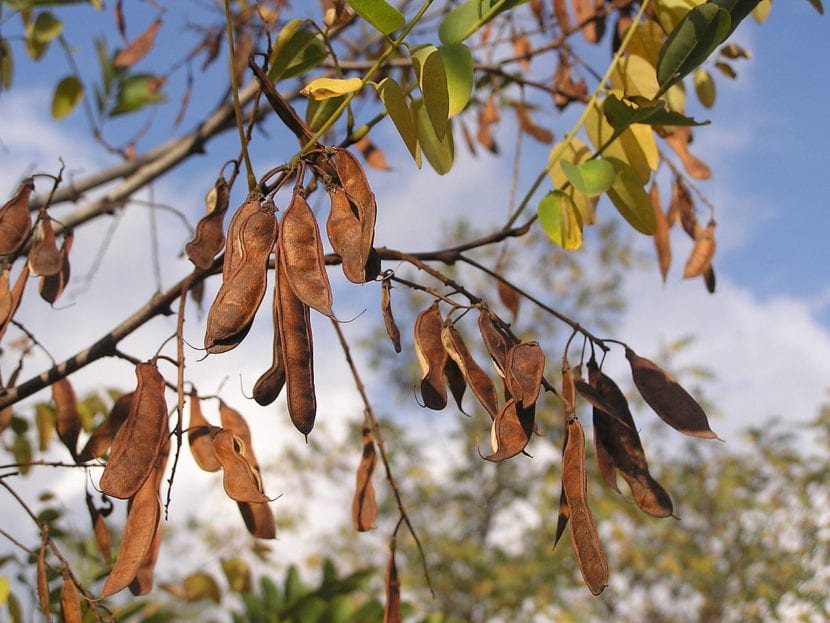
It is medium in size, looks spectacular in spring and provides interesting shade during summer. Your name? Robinia pseudoacaciaAlthough you may know it better by its other names, such as false acacia, white acacia, or bastard acacia. It grows very quickly, and, unlike other fast-growing plants, it is very long-lived, being able to live up to 120 years of age.
It supports a wide variety of climates and soils, as long as it is located in an area where it is directly exposed to sunlight. So now you know, if you urgently need a corner of shade in your beautiful sunny garden, plant a robinia.

This is a tree that has odd-pinnate leaves up to 35cm in length, with about 23 light green ovate leaflets. Its flowers appear in spring, and they form clusters of 15cm, white, and give off an aroma ... very, very pleasant. In addition, it is a honey plant, which means that it is a tree that bees use to produce honey.
There are some varieties, such as:
- Robinia pseudoacacia 'Umbraculifera': it has a reduced crown, spherical in shape. It can be had in small gardens.
- Robinia pseudoacacia 'Frisia': which has golden colored leaves.
How do you take care of yourself?

For it to grow properly, it is necessary to provide the following care:
- Location: outside, in full sun. Supports up to -16ºC.
- Irrigation: between two and three times a week in summer, and every week the rest of the year.
- Subscriber: highly recommended to fertilize in spring and summer with any fertilizer, organic ones, such as guano, being especially useful.
- Pruning: at the beginning of autumn suckers, suckers, weak branches and diseased ones have to be removed. It is important to disinfect pruning tools with pharmacy alcohol before and after pruning.
- Transplant: in spring.
- Plagues and diseases: usually have problems with fungi of the genus Poliporus. It can be prevented by disinfecting pruning tools.
- Reproduction: by seeds in spring. You have to put them in a glass of boiling water for 1 second, and in water at room temperature for 24 hours. The next day, you can sow them in a pot with a substrate composed of black peat mixed with perlite in equal parts.
What did you think of this tree? Do you dare to have one in your garden? 🙂